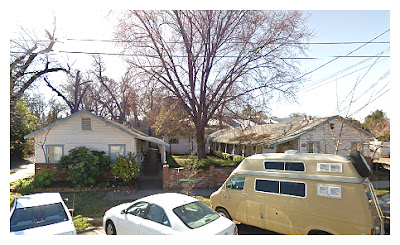Oroville Dam's Shadow
Earthquakes were not common in the area. Local students were surprised more than anything else. Swinging ceiling lamps, rocking floors and falling photos and art work from the walls, ended quickly. But the earthen monstrosity, 26 miles southeast of Chico on the Feather River, had spoken: Ignore me at your peril.
Simply, Godspeed old friends and fellow travelers. May the dam be safe, secure and strong again. May no earthquakes befall Butte County — or anywhere else.
The dam's spillway is in the news today.1 In 1975 Lake Oroville had been drained down for winter runoff and to repair intakes to the dam’s power plant. A rapid refilling created an earthquake. The first hint of the dam’s power over the people, and the communities, below it.
Photos Los Angles Times:
Lori Dengler, an emeritus professor of geology at Humboldt State University, said there is another chance of an earthquake. She said on the web, and in several area newspapers, including the Chico Enterprise-Record, that after years of drought a seismic event similar to the one that occurred in 1975 is possible.
A post on Temblor speculated that the large and rapid refilling of Lake Oroville (from the winter rains of 2016-2017), could set the stage for future induced earthquakes.
Dengler also linked readers to Seismo Blog, which posted “Oroville Dam Makes its own Earthquakes,” February 16, 2017.
Tenants at Colony Inn, mostly students at Cal State, Chico, fretted over the magnitude 4.7 quake for months (a magnitude 5.7 quake that followed is not remembered by a student,)
The first earthquake, however, was unsettling enough, and everyone knew it came from the dam. This was rumor, of course, but it still hasn’t been proven what actually happened.
According to the Seismo Blog, it's possible: “...the rapid change in hydrostatic pressure (from the rapid filling of the reservoir in 1975) somehow affected a dormant fault south of the lake."

Flooding and infrastructure are top priorities this winter, of course, but memories are strong.
“After six years of drought, the lake level had fallen dramatically," the Berkeley Seismological Laboratory cautioned, "only to rapidly increase due to the rainfall and runoffs in the last few weeks.
“So the question is: Are we in for a new bout of induced seismicity like that seen 41 years ago? Nobody knows, but if it happens, the modernized seismic station ORV (a seismic station built north of Oroville dam in 1963) will take notice. After 53 years it is still working and transmitting its data to the BSL (Berkeley Seismology Laboratory).
“In fact, during the current crisis, its sensitive seismic sensors have been recording ground vibrations caused by the torrent of of water roaring down the two spillways. These vibrations were so strong that they mask any weak signals of ground shaking that might be caused by tiny earthquakes."
Godspeed old friends and fellow travelers. May the dam be safe, secure and strong again. May no earthquakes befall the land.

Footnote
1 The Chico News & Review reported "concrete erosion" was discovered on the Oroville Dam spillway February 7, 2017.



















